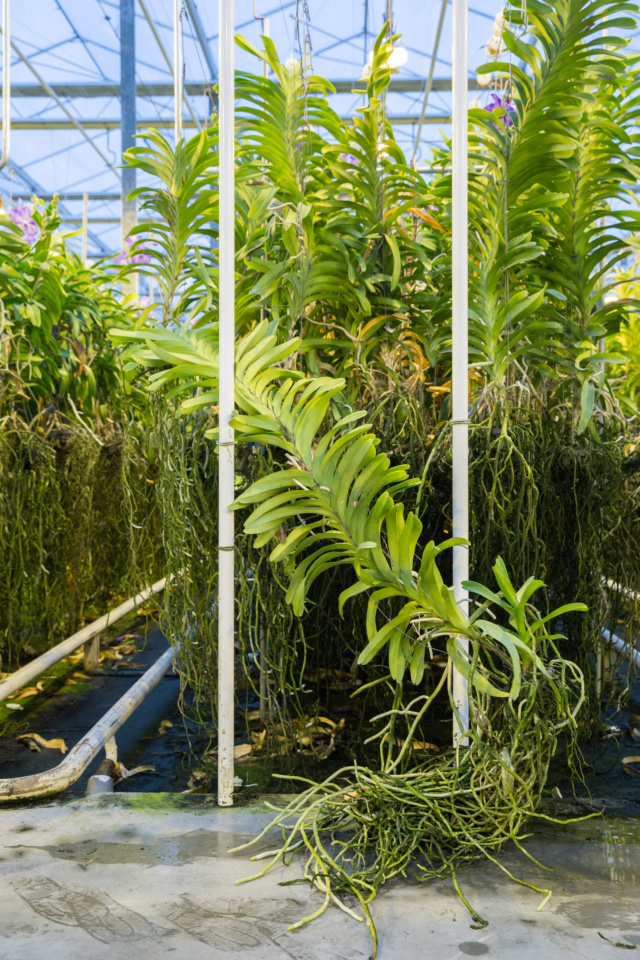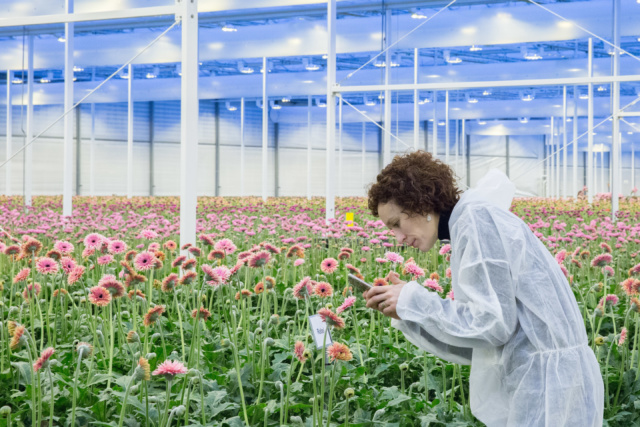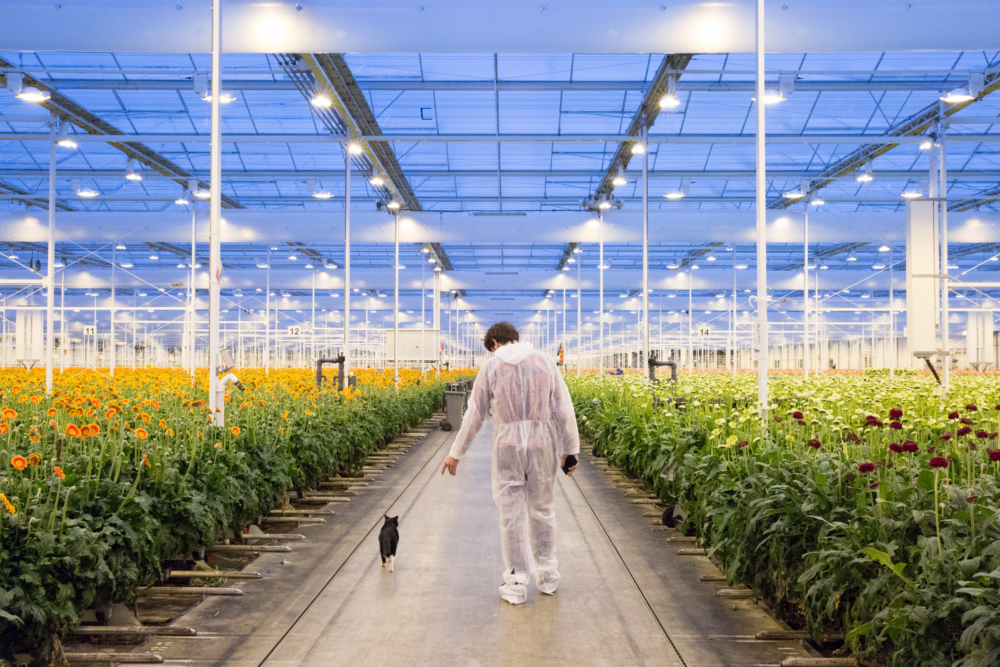11 February 2019
A few months ago, we found ourselves in Holland, thanks to a kind invitation from our flower wholesaler, Hoek Flowers.
OUR TRIP TO HOLLAND
The breaking-dawn just outside Amsterdam has an eerie pink glow. It is caused by light pollution from nearby greenhouses, of which there are no shortage in Holland.
The Netherlands houses some 500 football pitches worth of greenhouse space, and provides 90% of all of Europe’s orchids. In the afternoon, we witness some of this trade first-hand, with a visit to Anco Pure Vanda orchid farm.
But first, our bleary morning eyes have a flower auction at Rijnsflowers’ distribution centre to take in. The auction is live over the internet – photos of flowers are uploaded, and customers bid online. Then, an automated process takes over, and the flowers are packaged, moved to loading bays, and shipped by trucks all over Europe, and on around the world.

THE RISE AND FALL OF THE DUTCH FLOWER INDUSTRY
Today, the selling and shipping of flowers is a high-tech industry, replete with automated systems, online auctions, and modern forms of transportation. But Holland was a hub for the global flower trade long before any of these innovations were available.
After its introduction in the late 1500s, it only took a few years for the tulip to become a treasured commodity. In 1590, the pioneering botanist Corolus Clusius broke new ground cultivating tulips, and he spent his later years devoted to understanding the mysterious phenomena of ‘tulip breaking’. Tulip breaking, a strange phenomenon whereby the hues on the flowers’ petals ‘broke’ apart, changing into multicoloured patterns, was a driving force behind the ‘tulip mania’ that took hold during the 17thcentury.
‘Tulip mania’ was, perhaps, the most incredible period in the flowers’ history. At times, bulbs were worth more than gold – much to the benefit of the Dutch East India Company, which, at one point, was making profits of 400% on tulips alone. By the end of the 17thcentury, tulips had become the Netherland’s fourth largest export.
This fascinating period spawned romance and adventure, from Alexandre Dumas’ The Black Tulip to 2017’s Tulip Fever. But all things come to an end – including tulip mania. It went down in history as the world’s first-ever financial bubble, and when it popped, a market crash ensued.
THE DUTCH FLOWER INDUSTRY TODAY
Today, some 219 years after the dissolution of the Dutch East India company, things are very different. At Anco Pure Vanda orchid farm, the cultivation system is automated – as are systems in other farms, tending to other flowers.


Later, on a trip to Holstein Flowers, yet more automation is on display, but there is a distinctly human touch too, as diligent botanists spend time and money innovating not just the production of flowers, but the flowers themselves. This is a birthplace of entirely new varieties. And to avoid contaminating any of this scientific brilliance, we have to dress like a group of giant marshmallows.


HOW THE DUTCH FLOWER INDUSTRY ROSE FROM THE ASHES
The Netherlands’ floral empire did not return to prominence overnight. Rather, centuries of horticultural skills built up in service to flowers were repurposed and turned to the cultivation of farming crops. The tulip did not come back in to vogue until the years following the Great War – but this time, it was priced in a range that let a majority of people enjoy its fragile beauty.
At this point, farmers began to shift back to the cultivation of flowers – a move that was encouraged and supported by the Dutch government, which offered a variety of subsidies in the 1950s that let ambitious flower-growers invest in new technology and research.
This combination of centuries of experience and government backing helped to propel the Dutch flower industry back to something like its former glory. With the arrival of the ‘Flying Dutchman’ in the 1980s, the Netherlands began exporting cheap flowers on a massive scale. And despite competition from a number of other countries (Kenya, South America, and more) it is still the world’s dominant supplier.
For the Netherlands, flowers are a major industry. Roughly 60% of the country is devoted to agriculture or horticulture, and the multi-billion-euro flower industry accounts for 10% of its Gross Domestic Product.




HOW BREXIT WILL AFFECT THE FLOWER INDUSTRY
There is, of course, an elephant in the room. The UK buys a billion pounds-worth of flowers from Holland every year. After Brexit, when the UK and the Netherlands become separate markets, that could change.
When the UK and the EU divorce, goods travelling between them will become subject to customs checks, sanitary checks, and tariffs. Those tariffs – on a no deal basis – could hit 7%, which would shock the flower industry. And the UK may have to look to other, lower-cost, markets for its goods.
The main threat, however, is administrative in nature: neither the UK nor Europe have facilities set up for flower checking at ports. The potential problems with getting flowers across the border at all – whatever the tariffs – are manifold.
It is not only Britain’s florists that could suffer. If flower growers decide to bypass online auctions and trade directly with the UK, the auctions would diminish, proving devastating to smaller growers who rely upon them.
In a best-case scenario, it is almost certain that Dutch flowers will no longer be as fresh when they reach the UK, having been held up by checks at the border.
The problem we are left with, like most businesses in the UK is the uncertainty. Nevertheless, the flower industry has weathered similar difficulties in the past, so regardless of what happens when the UK leaves the EU, the industry will adapt.


